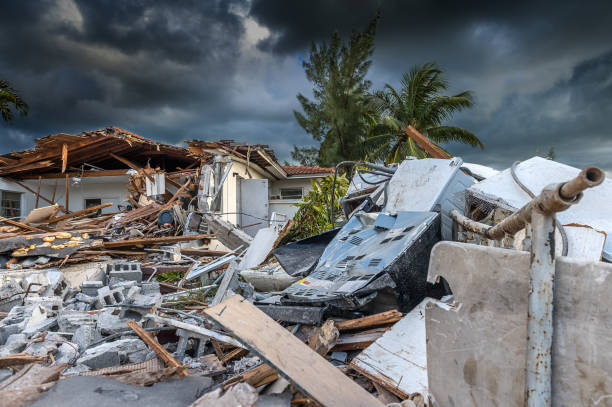Earthquakes are among the most terrifying and unpredictable natural events on our planet. They strike without warning, shaking the ground, toppling buildings, and sometimes taking thousands of lives in a matter of seconds. Humanity has long viewed earthquakes as forces beyond control, manifestations of the Earth’s raw power. Yet as our understanding of the planet’s inner workings grows, the question arises: could humans one day learn to control, or at least influence, seismic activity? To consider this possibility is to confront the delicate balance between human ingenuity and nature’s immense, often invisible forces.
Earthquakes are born deep beneath the surface, in the brittle crust and the underlying mantle, where tectonic plates shift, collide, and grind against one another. The planet’s outer shell is fractured into dozens of such plates, floating atop a viscous, slowly flowing interior. Where plates interact, stress accumulates. When this stress surpasses the strength of the rocks, it is released in sudden bursts of energy that radiate through the Earth as seismic waves. This violent process is, fundamentally, a release of energy stored over decades, centuries, or even millennia. The magnitude of an earthquake depends not only on the amount of energy stored but on the characteristics of the fault itself—the geometry, friction, and depth of the fracture.
The Origins of Earthquake Science
Our ability to understand earthquakes is relatively recent. For centuries, people regarded earthquakes as divine punishment, mysterious upheavals, or manifestations of the supernatural. The ancient Greeks speculated that shifting underground vapors caused the tremors, while early Japanese texts referred to earthquakes as the movements of giant subterranean dragons. It was not until the 19th and 20th centuries that systematic study began.
Seismology, the science of studying earthquakes, emerged with the invention of the seismograph. This instrument, which records ground motions, allowed scientists to measure the magnitude, frequency, and epicenter of earthquakes with unprecedented precision. By analyzing these records, researchers discovered the global distribution of earthquakes, the existence of fault lines, and the connections between seismicity and plate tectonics.
The modern understanding of earthquakes as manifestations of tectonic stress opened the door to questions previously considered impossible. If earthquakes are caused by the accumulation and sudden release of energy along faults, could humans, in theory, influence this process? Could we release energy in a controlled manner, preventing catastrophic quakes, or even trigger small, manageable tremors to relieve stress along fault lines?
Human Interaction with Seismic Activity
Though the idea of controlling earthquakes might sound like science fiction, humanity has been affecting seismic activity for decades, often unintentionally. Large-scale constructions such as dams, reservoirs, and deep underground mines can alter stress distributions in the Earth’s crust. The most notable example is the 1967 Koynanagar earthquake in India, which occurred near the site of a newly constructed reservoir. Filling the reservoir increased pressure on the underlying fault, contributing to a magnitude 6.3 quake that caused significant destruction.
Similarly, oil and gas extraction, particularly hydraulic fracturing—or fracking—has been linked to induced seismicity. Injecting high-pressure fluids into rock formations can lubricate faults and trigger small earthquakes. While these tremors are generally minor, they illustrate the principle that human activity can influence seismic events. The prospect of controlled intervention is therefore not entirely without precedent.
The Physics of Earthquake Control
To imagine controlling earthquakes, we must first confront the physics that govern them. The Earth’s crust is a vast, heterogeneous system, where stress is stored in complex, interconnected fault networks. Releasing energy along one fault can have unpredictable effects on neighboring faults. A small, local quake could relieve stress in one region while unintentionally increasing it elsewhere, potentially triggering larger events.
Moreover, the energy scales involved are immense. A magnitude 7 earthquake releases approximately 32 times more energy than a magnitude 6, and a magnitude 8 quake is roughly 32 times more energetic than a magnitude 7. To influence such energy in a precise and controlled way requires mechanisms beyond anything currently available. Even the largest human-made explosions, including nuclear detonations, pale in comparison to the energy released during moderate to major earthquakes.
Yet scientists have proposed theoretical strategies. One approach involves “stress relief” through controlled seismicity. By inducing a series of small, manageable earthquakes, energy could, in principle, be released gradually along a fault, preventing the sudden, catastrophic rupture of a major quake. Another idea is to inject fluids into deep faults to reduce friction, allowing them to slip slowly. Both approaches, however, carry profound uncertainties. A miscalculation could transform a minor intervention into a disaster, making the ethics of earthquake engineering as complex as the physics.
Earthquake Prediction and Early Warning
Before humans could even attempt to control earthquakes, accurate prediction and early warning are essential. Seismologists have long sought reliable precursors that indicate an impending quake. Variations in ground tilt, gas emissions from faults, subtle foreshocks, and even changes in groundwater levels have been investigated. Yet despite decades of research, no consistently reliable short-term prediction method exists. Earthquakes often occur without obvious warning, underscoring the chaotic nature of tectonic systems.
Despite these limitations, technology has enabled the development of early warning systems. Countries like Japan and Mexico have deployed networks of seismometers that detect the first seismic waves, alerting populations seconds to minutes before the more destructive waves arrive. These systems cannot prevent earthquakes, but they can reduce casualties by giving people time to take protective action. Such systems illustrate a form of indirect control: while humans cannot stop the Earth from trembling, we can mitigate its human impact.
Lessons from Nature: Earthquakes in Slow Motion
Interestingly, nature itself provides a model for controlled seismicity. Some faults exhibit “creep,” where stress is released slowly and continuously rather than in sudden bursts. The San Andreas Fault in California, for example, has segments that creep, moving a few millimeters per year and preventing large quakes along those stretches. Observing and understanding these naturally slow-moving faults offers insight into what might one day be achieved artificially: controlled, gradual release of tectonic energy.
The challenge is translating natural processes into human intervention. Engineering the Earth’s crust requires precise knowledge of fault geometry, frictional properties, and stress distribution, information that is difficult to acquire. The Earth is not a laboratory; faults are hidden kilometers underground, surrounded by heterogeneous rock that behaves unpredictably under stress. Any attempt to manipulate these systems is fraught with uncertainty.
Ethical and Social Dimensions
Even if earthquake control became technically feasible, it would raise profound ethical and social questions. Who would decide where and when to intervene? Fault networks span countries and continents; inducing a quake in one location could transfer risk to another. The potential for unintended consequences is enormous. Could humanity ever assume the responsibility of manipulating such immense natural forces?
Public perception also matters. Earthquakes are a source of collective fear, and any attempt to control them would be scrutinized, debated, and potentially politicized. Transparency, regulation, and international cooperation would be essential. The history of other large-scale environmental interventions, from river damming to geoengineering proposals, shows how easily scientific optimism can collide with social, ecological, and political realities.
Future Technologies and the Road Ahead
Despite these daunting challenges, science continues to advance in ways that might one day make some form of earthquake control conceivable. Advances in artificial intelligence, high-resolution subsurface imaging, and deep drilling technology provide tools for understanding faults with unprecedented precision. Machine learning can help model complex fault networks, simulating the effects of potential interventions before they are attempted. New materials, capable of withstanding extreme pressures, might allow engineers to influence stress in small, controlled ways.
Geothermal energy projects, which involve injecting fluids into the Earth’s crust, are providing real-world laboratories for studying induced seismicity. Each small quake is a data point, teaching scientists how faults respond to stress changes. Over decades, this growing body of knowledge could inform techniques for reducing earthquake hazards in a deliberate, scientifically grounded manner.
Yet, the vision of fully controlling earthquakes remains distant. Unlike weather, which can be influenced over localized regions, tectonic forces operate at planetary scales. The energy involved, the interconnectedness of faults, and the inherent unpredictability of rock behavior all pose formidable barriers. Any near-future applications are likely to be limited to minor, localized interventions aimed at reducing small quakes or mitigating stress in specific areas rather than orchestrating large-scale seismic control.
Philosophical Reflections: Humanity and Nature
The quest to control earthquakes is, in a sense, a reflection of humanity’s broader relationship with nature. From the first fires to modern genetic engineering, humans have sought to bend natural forces to their will. Earthquakes, however, remind us of the limits of control. They are a humbling testament to the planet’s immense power and complexity. Attempting to manipulate them requires not only scientific ingenuity but profound respect for the unpredictable consequences of our actions.
Perhaps the true path forward is not total control but coexistence. By studying faults, improving building codes, developing early warning systems, and understanding the processes that drive seismicity, humanity can live more safely alongside earthquakes without assuming full dominion over them. The goal is not domination, but harmonization: learning to anticipate, adapt, and, when possible, gently influence the forces beneath our feet.
Conclusion: A Future of Possibilities
Could humans one day control earthquakes? The answer is both tantalizing and sobering. Technically, small-scale interventions are conceivable, and human activity already influences seismicity in minor ways. Theoretical models suggest that gradual stress release or fault lubrication might one day reduce the risk of catastrophic quakes. Yet the challenges—immense energy scales, unpredictability, and ethical dilemmas—make full control unlikely in the foreseeable future.
The pursuit of earthquake control is more than a scientific endeavor; it is a meditation on human ambition, humility, and creativity. It challenges us to expand our understanding of the Earth while confronting our limitations. Each tremor reminds us of the delicate balance between curiosity and caution, power and responsibility.
In the end, the dream of controlling earthquakes may never be fully realized, but the journey toward understanding them offers profound rewards. Knowledge, preparedness, and the careful application of science can save lives, inspire innovation, and deepen our appreciation for the extraordinary planet we call home. Humanity may never command the Earth entirely, but through persistence, ingenuity, and respect for nature, we may learn to coexist with its tremors and, in small but meaningful ways, shape our destiny in harmony with the forces that move beneath us.






